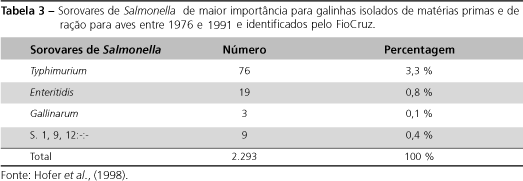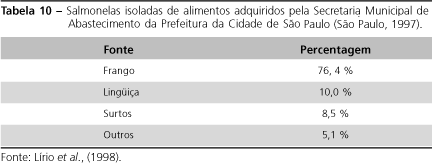In Brazil, Salmonella enteritidis (SE) emerged as a serious problem in poultry and public health as from 1993. Epidemiological studies, including fagotyping and complementary rRNA probe, suggest that SE entered Brazil via the importation of contaminated poultry genetic material, probably at the end of the eighties. The rate of growth of the Brazilian poultry industry in the nineties created favorable conditions for the maintenance and proliferation of SE in poultry production. Also, the indiscriminate use of antibiotics in chickens, especially quinolones, encouraged the maintenance of SE positive flocks. SE strains isolated from chickens have shown great sensitivity to the antibiotics commonly used in poultry, including the quinolones. However, an increase in antimicrobial resistance and multiresistance has been observed in strains of human origin. The latest surveys carried out in 2001 continue showing the presence of SE in poultry materials as the main serovar responsible for human food infections. Although chicken carcasses show high levels of contamination by SE, it is eggs and egg products - mainly home made mayonnaise - which are the products mostly responsible for outbreaks in humans. The use of specific vaccines in layers and parent stock has been used as an auxiliary tool in the control of SE. However, the most indicated procedure for the control of SE in poultry is the acquisition and production of SE free flocks. Animal feed and raw materials of animal origin are apparently of lesser importance in the perpetuation of the SE problem, although rodents appear to be important environmental reservoirs of SE in contaminated farms.
avian salmonellosis; chickens; eggs; poultry; Salmonella Enteritidis
















